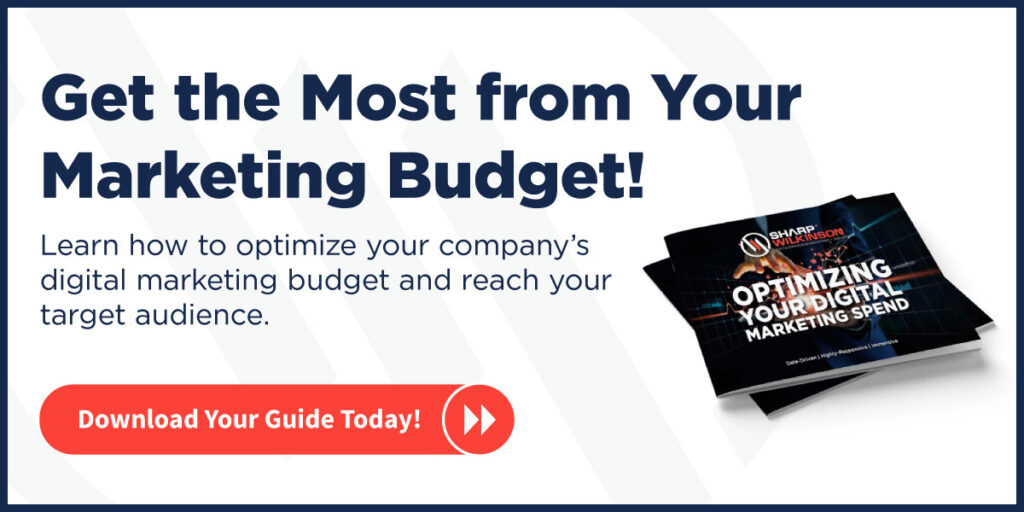How does an ancient art complete the sale? Do the basics of persuasion still matter in a world supersaturated with advertisements? Is rhetoric all just cheap talk?
In order for the answers to make sense, I’ll have to reorder my responses.
Download Your Guide to Creating Beautiful Infographics!
1. Is Rhetoric All Just Cheap Talk?
The short answer: no. But this is not a new question: in fact, Plato himself wrote entire books about what he considered rhetoric’s shortcomings (frankly, he was a bit of a nerd). He compared the human soul to a chariot being pulled by two horses: a noble, divine horse representing the study of philosophy and an unruly, evil horse representing rhetoric. The philosophical horse tried to keep its charioteer on the straight and narrow while the rhetorical horse tried to pull the entire team off course.
All that to say this question about rhetoric’s value (and values) predate what most rhetors consider our foundational text: Aristotle’s The Rhetoric.
So, what is rhetoric? The best definition I’ve come across is still the first one I’ve read: “Rhetoric is a civic art devoted to the ethical study and use of symbols (verbal and nonverbal) in order to address public issues.”
There are 7 principles behind rhetoric:
- Rhetorical studies are good for society
- Rhetoric is a civic art, addressing matters relevant to its audience.
- Rhetoric both uses and studies symbols
- Rhetors both evaluate previously existing “artifacts” and create new ones to be evaluated.
- Rhetoric is grounded in moral principles, bases on reasons, and subject to evaluation
- Both the ends and the means the speaker espouses matter and ought to be critiqued.
- Rhetoric uses both verbal and nonverbal symbols
- Rhetoric isn’t just words. Songs, paintings, photographs, museums, et cetera, are also rhetorical artifacts.
- It’s typically used to address public issues
- It exists to help people solve problems. Different sectors face different problems.
- It’s a form of power
- Rhetoric has the power to move audiences and encourage action.
- It’s both contingent and situational
- Reasonable people disagree and that’s a good thing! Rhetors are open to multiple possibilities and opinions. Rhetoric can be used either as a persuasive or as an informational tool.
Rhetoric and marketing are different, but not completely separate, which I will prove shortly.
2. Do the Basics of Persuasion Still Matter in a World Supersaturated with Advertisements?
No prizes offered for predicting my response; it’s unequivocally yes.
Hootsuite founder Ryan Holmes said in a 2019 LinkedIn post that the average consumer is exposed to 5,000 ads per day. Some of these ads are subtle, while others are specifically designed to attract attention. And, unfortunately, some campaigns have no shame. You know that commercial you hate? What matters to that advertiser is not what you feel about that ad, but that you remember it—namely, the brand behind it.
Marketers need to adapt and turn away from this problem of our own making. This notion of “negative attention is better than no attention” is not a sustainable way to maintain relationships with existing customers and will eventually alienate them.
Outbound marketing will always have its place in a well-rounded marketing strategy, but one thing that resonates with me about the inbound marketing approach is it prioritizes the relationship with people in—as HubSpot calls it—the flywheel.
 Image courtesy of HubSpot
Image courtesy of HubSpot
The steps required to consistently and repeatably attract, engage, and delight anyone on the buyer’s journey requires a more subtle approach. A thorough understanding of rhetorical methods is a guide to doing so responsibly and earning potential customers’ trust.
Simply put, rhetoric is the art and science of argumentation and persuasion. The argument refers to what you want the audience to do; persuasion is the method through which you convince the audience to do that action—proving to them that the course of action you’re suggesting is the right one for them. Aristotle identified three modes of proof; though they are now in our modern lexicon, it’s still helpful to review them:
- Ethos
- Ethos is your character. It refers to your trustworthiness, experience, and expertise in the subject on which you’re speaking.
- An Economic Summit featuring a Harvard professor may sound appealing, but if you were to find out the professor’s expertise is in chemistry, though he’s undeniably smart, you may question the reliability of the summit itself.
- Pathos
- Pathos refers to emotion. Does the speaker know how her audience feels about something and use this information to persuade them?
- A political speech about local crime rates may reference the audiences’ fear to convince members of the need for action.
- Logos
- Logos is logic. It asks us to reason through our decision-making process.
- When manufacturers need to select the right material for a project, they must weigh each material’s strengths and weaknesses and select which one is best for the project. After all, it doesn’t benefit anyone to make an emotional decision in that circumstance.
While all three of these are persuasive, some people are more persuaded by one, the other, or the third. For example, I consider my decision-making to be logos-driven, which is why the B2B sector uniquely appeals to me. But every buyer is different, and many industries are oriented toward a particular proof, which is evident in the development of buyer personas.
 Public speaking is an essential component to rhetoric and business meetings alike.
Public speaking is an essential component to rhetoric and business meetings alike.
Knowing this, whenever I write a blog, I make a point of incorporating all three modes of proof into the content, but each piece must prioritize one. To attempt to be perfectly equal in all three is to sit on a fence that divides the argument against itself. Which proof does this blog choose?
This all works best when the persuasiveness is subtle. No one likes to feel marketed toward, after all, but, ultimately, marketing is persuasion. Therefore, it is a balance to be struck.
3. How Does an Ancient Art Complete the Sale?
After an MQL becomes an SQL, it’s time for your sales team to close the deal. Again, mastery of rhetoric is central, and Aristotle’s proofs are key. These leads are reasoning through their buying options, so establishing your ethos as a trustworthy solution will make the buyer feel confident and faithful in your organization.
How is this done? Again, it comes down to the ability to successfully argue your position—in the sales context, your position is likely “our company is the right fit for yours.” How do you prove that? There are a few proven methods:
- Compare and contrast: how is your organization alike and unlike your competitors and peers? Let’s say you’re a machine shop owner, and both you and a competitor have similarly sized shops and you both offer similar services, but because you’ve invested more in automated systems, you can make more parts more affordably than your competitor.
- The concept of differentiation—the critical factor that makes your organization special—is the prime example of this.
- Cost/Benefit is the promise that the benefits your organization offers exceed the cost. In other words, when a customer works with you, your work will be profitable for them.
- Signs are indications that something will happen, but the sign itself has no role in that occurrence. For example, a survey of consumer confidence may signal future business activity. Is your industry on the threshold of a major increase?
- An economic dip doesn’t necessarily mean your market share is going to suffer. During the 2008 Great Recession, cybercrime increased by 33%, illustrating how managed IT services are even more important during tough economic times.
Great arguments require backing: evidence that your claims are true and worth further consideration. A case study is a complete story of past success to show your experience will bring success. A statistical breakdown of how many orders are delivered early or on time will indicate your organization’s reliability. A testimony is a current client telling a prospective client a story about how your organization helped them; this way, the prospect is hearing a success story from one of their peers to show you can deliver a similar outcome. All three of these indicate the importance of arming your sales team with memorable pieces of collateral to leave behind—especially as the prospect nears the decision stage of the buyer’s journey.
Rhetoric & Marketing
These are all examples of rhetorical theory finding practical applications in the real world. A “silver tongue” is the trademark of a gifted salesperson. This person has a charisma that may come naturally or from a thorough understanding of rhetoric. Developing such an understanding takes time and training. As has been outlined here, though, both marketing and sales departments stand to benefit from it. Rhetoric is far from cheap talk: it is a methodological and purposeful structure of argumentation perfectly suited to developing a robust inbound marketing strategy. Sharp Wilkinson delivers these results and we’re excited to show you what we will do for you.





